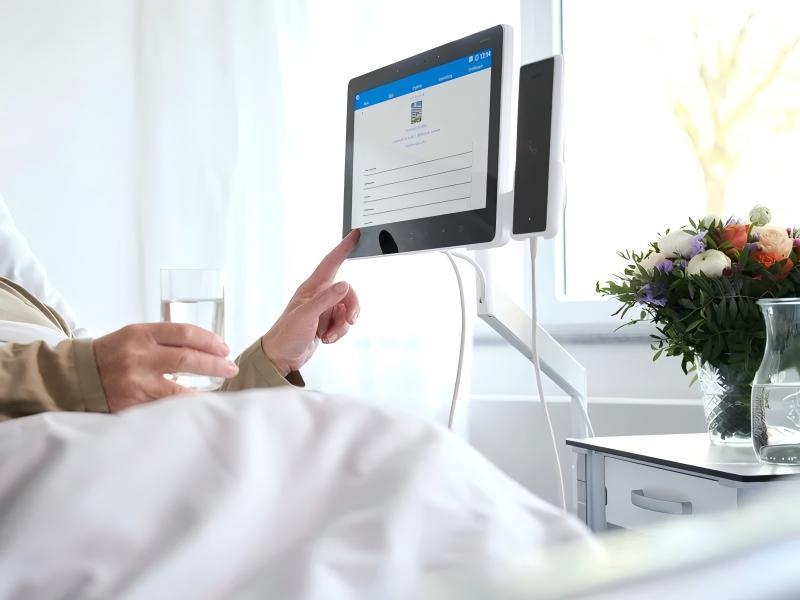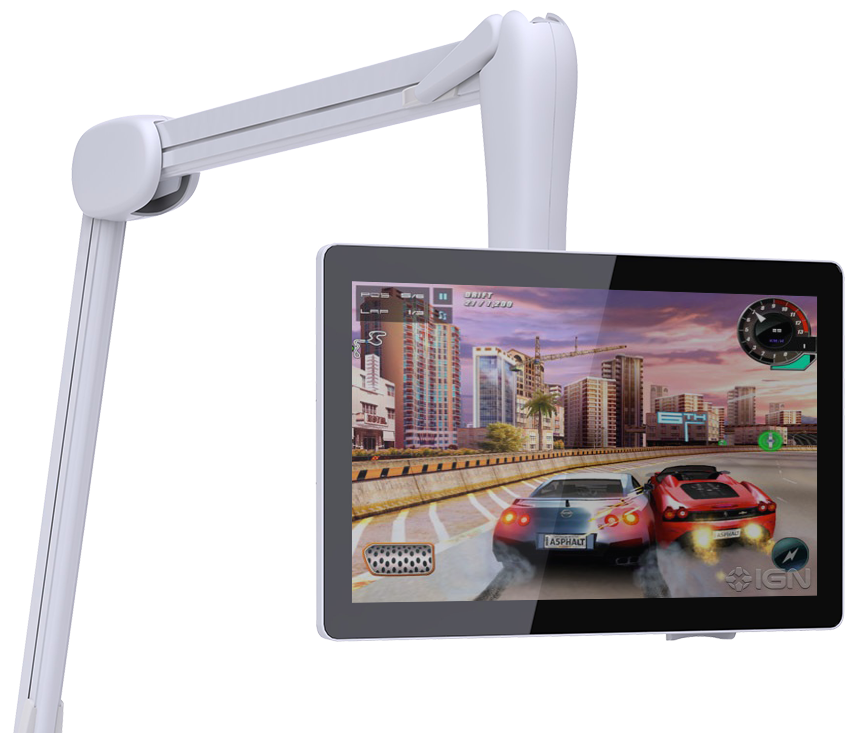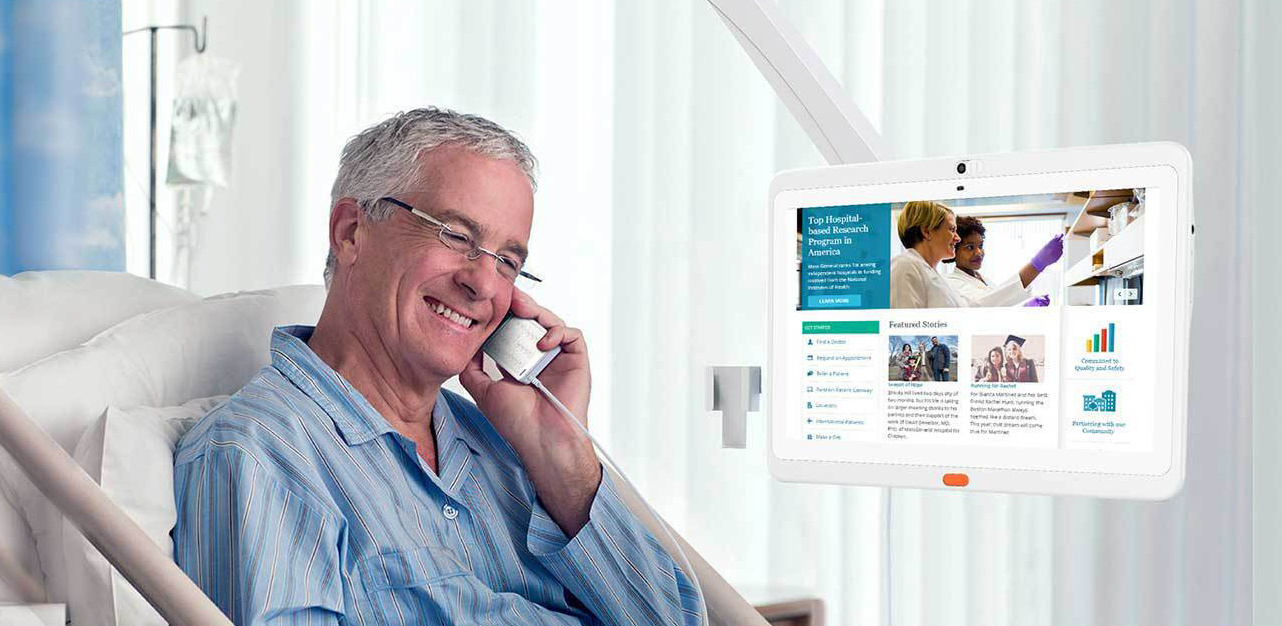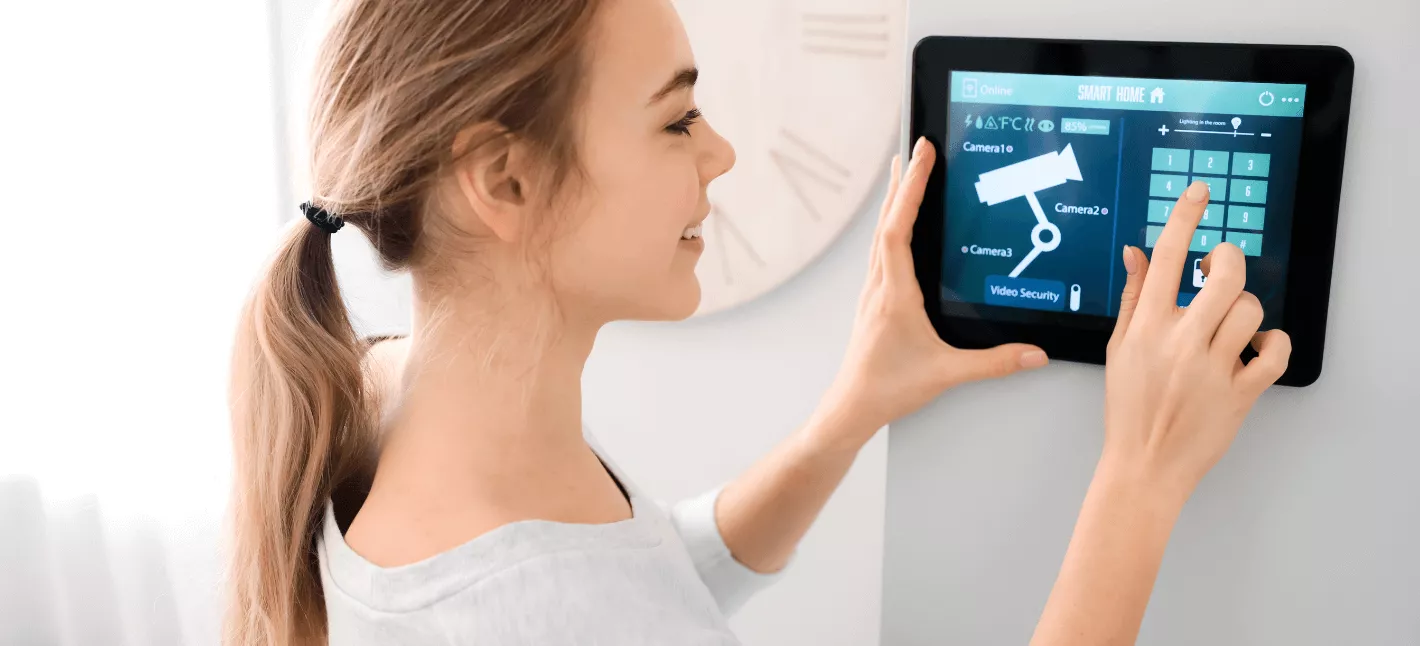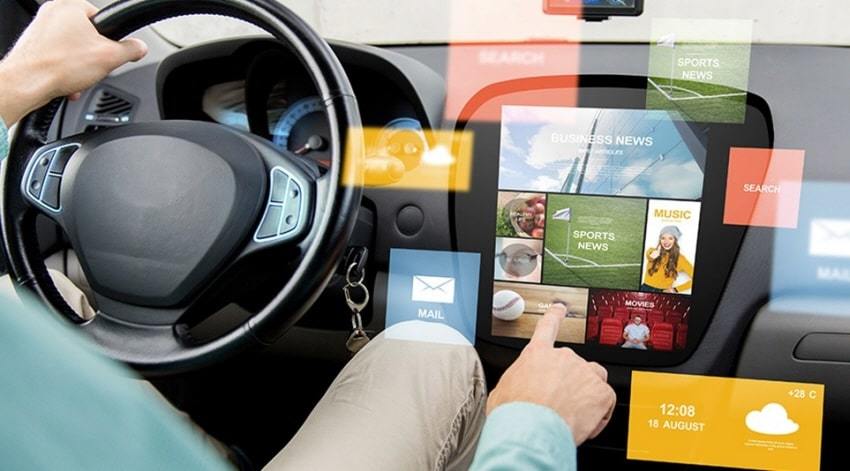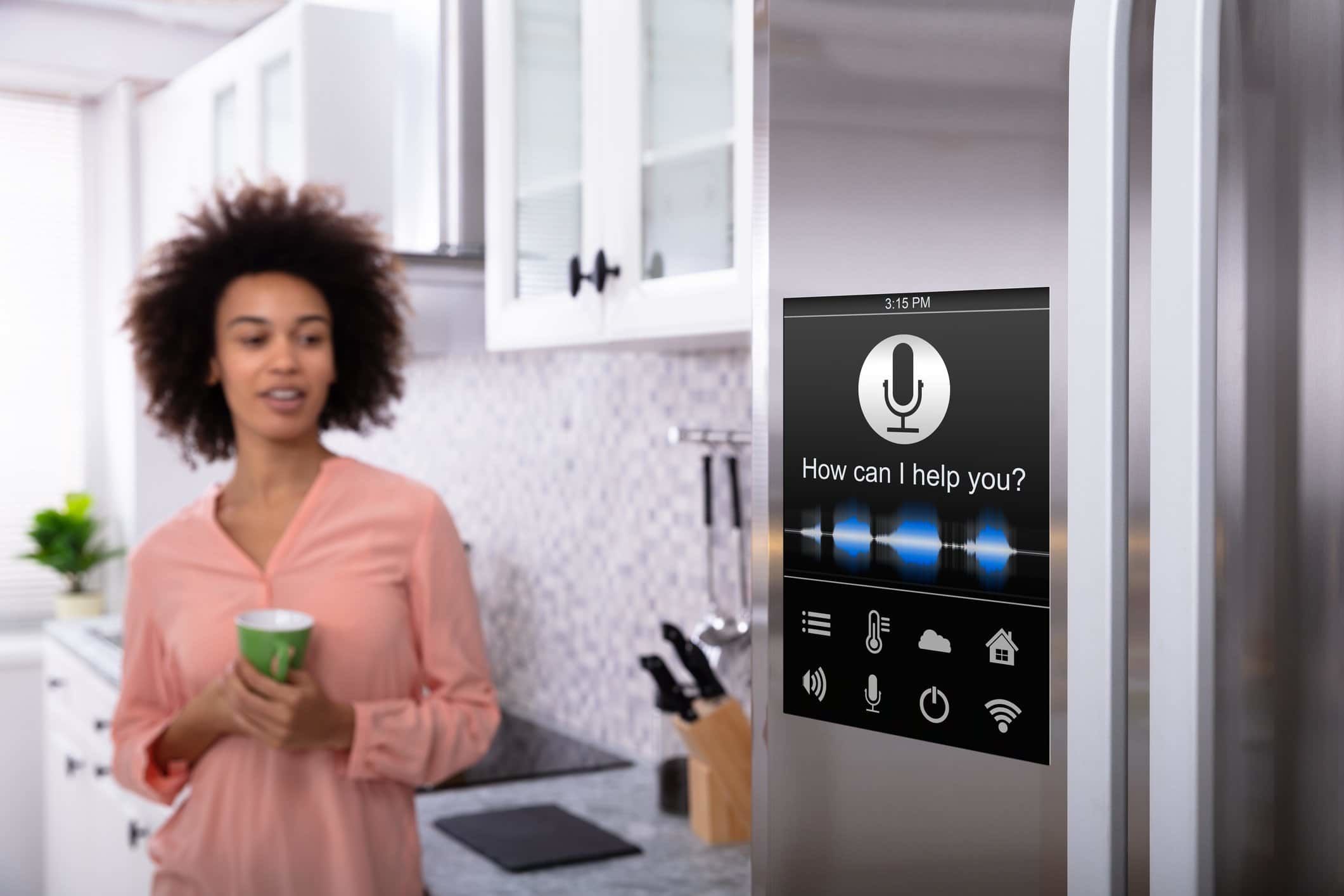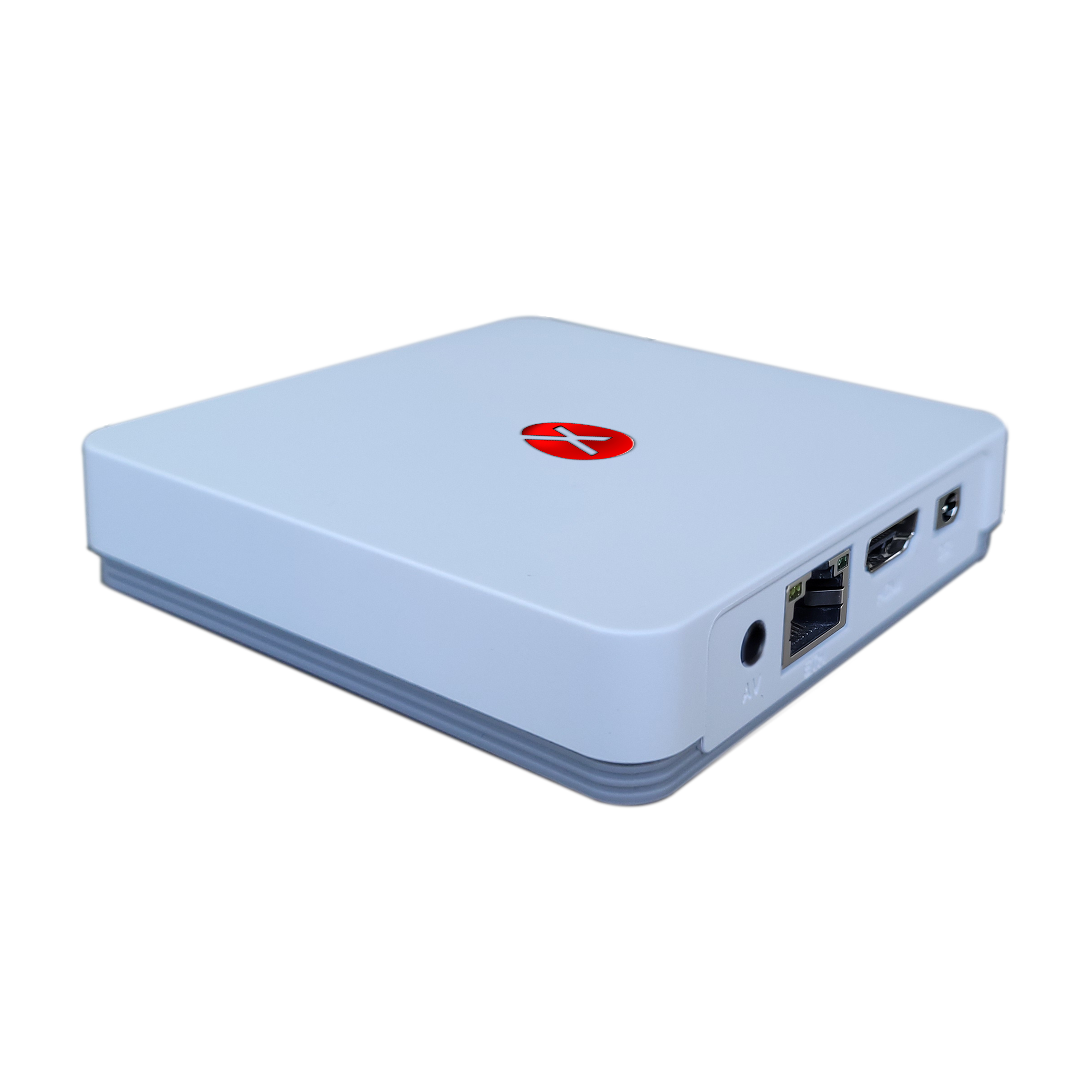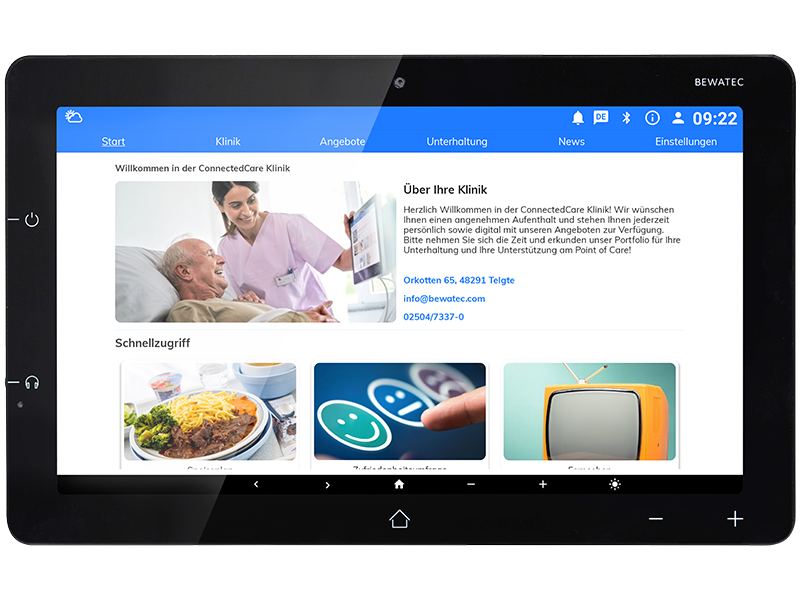

Bedside terminal
Category:
Key words:
Edge computing AI box with Algorithm NPU
Product Detail
Introducing our cutting-edge bedside terminal, designed to revolutionize patient care and streamline healthcare operations. This state-of-the-art device features robust Google certification, ensuring top-tier security and reliable access to essential applications. With an intuitive interface, healthcare professionals can efficiently manage patient information, access medical records, and facilitate communication—all at their fingertips. In addition to its Google certification, our terminal supports an advanced Linux operating system, providing unparalleled flexibility and customization options. This allows healthcare facilities to tailor the terminal's functionalities to meet their specific needs, enhancing workflow efficiency and ensuring a seamless integration into existing systems. Our bedside terminal stands out not only for its technological advancements but also for its user-friendly design, which prioritizes ease of use for medical staff and patients alike. With features like touchscreen navigation and real-time data access, this terminal is more than just a device; it is a vital tool in delivering exceptional patient care. Invest in our bedside terminal today and experience the perfect blend of security, customization, and user-centric design that will elevate your healthcare facility to new heights. Let’s transform patient care together!
Advantage
Relieving the burden on nursing staff – so that they have more time for their patients. The modules of the ConnectedCare platform assist nursing staff with their everyday patient communication and free up resources for nursing and care.

Digitalize and optimize the communication processes in your hospital. Easy and accessible communication with your patients and secure and quick display of relevant data: It’s possible with ConnectedCare.

Offer your patients extensive entertainment with free and pay TV, digital reading offers, and much more. Create a feeling of safety and greater understanding with more patient information.
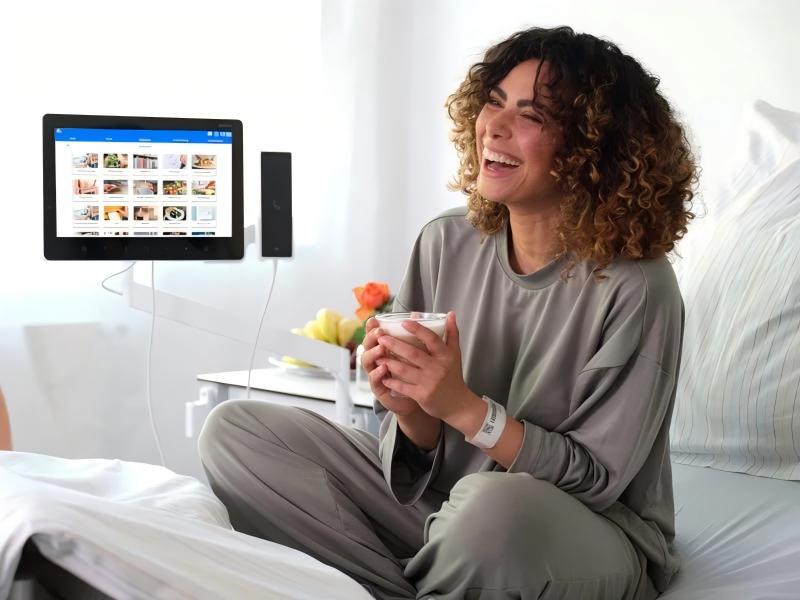
This terminal is designed to provide the highest level of protection for all medical and patient data within the hospital. We prioritize security from the very beginning of the development process.

Effective communication is crucial in a hospital setting as it enhances daily interactions among staff and between healthcare providers and patients. When communication is clear and empathetic, patients feel understood, leading to increased satisfaction and trust in their care. As a result, this understanding reduces the emotional and informational burden on nursing staff, allowing them to focus more on their clinical responsibilities and deliver better care. Improved communication can also help in quickly addressing patient concerns, thus streamlining processes and reducing potential misunderstandings. Overall, prioritizing effective communication fosters a more supportive environment for both patients and healthcare professionals, ultimately contributing to better health outcomes and a more harmonious workplace. By implementing strategies to enhance communication skills, the entire healthcare team can work more efficiently and compassionately, ensuring that patients receive the attention and care they deserve while alleviating some of the pressures faced by nursing staff.
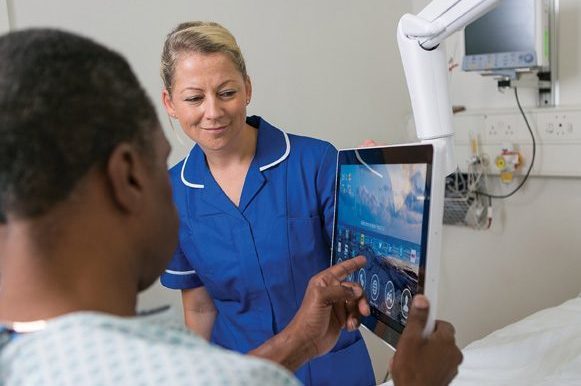
Edge Al Box Use Cases
1. Home automation: Smart speakers with 4 array mic voice control and zigbee gateway can be used to control various smart home devices such as lights, thermostats, and security cameras. The zigbee gateway allows the smart speaker to communicate with zigbee-enabled devices, expanding the range of compatible devices that can be controlled.
2. Emergency assistance: The SOS button on the smart speaker can be used to quickly call for help in case of an emergency. This can be especially useful for elderly individuals or those with medical conditions who may need immediate assistance.
3. Voice commands in noisy environments: The 4 array mic voice control feature enables the smart speaker to accurately pick up voice commands even in noisy environments. This can be helpful in busy households or public spaces where background noise may make it difficult for the smart speaker to understand commands.
4. Hands-free communication: Smart speakers with voice control allow users to make hands-free calls, send messages, and access information without having to touch the device. This can be convenient when driving, cooking, or doing other activities where using a smartphone may be impractical.
5. Personal assistant: Smart speakers can act as personal assistants, providing information on weather, traffic, news, and more. The voice control feature makes it easy to interact with the smart speaker and access the information you need quickly and efficiently.
6. Security: Smart speakers with voice control and Zigbee gateway can be integrated with security cameras, sensors, and alarms to provide a comprehensive home security system. Users can receive notifications, arm/disarm the system, and even communicate with visitors using voice commands.
7. Energy management: By integrating smart meters, energy monitors, and smart plugs with smart speakers and Zigbee gateway, users can monitor and control their energy usage more effectively. They can set schedules, track consumption, and optimize energy usage based on their preferences.
8. Entertainment: Smart speakers with voice control can also be used to stream music, audiobooks, podcasts, and radio stations. Users can simply ask the speaker to play their favorite songs or playlists without having to use a separate device.
9. Health and wellness: Smart speakers with voice control can provide health and wellness reminders, such as medication schedules, exercise routines, and healthy eating tips. Users can also access guided meditation sessions, sleep sounds, and relaxation techniques to improve their well-being.
Overall, smart speakers with voice control and Zigbee gateway offer a wide range of use cases to enhance convenience, security, efficiency, and entertainment in the home environment.
Using senarios
The integration of smart hardware and software has revolutionized various industries, enabling enhanced efficiency and innovative solutions. For instance, in the healthcare sector, smart wearable devices equipped with sensors continuously monitor vital signs, transmitting real-time data to healthcare providers. This allows for proactive patient management and timely interventions, ultimately improving health outcomes. In the realm of smart cities, interconnected sensors and IoT devices optimize urban infrastructure. Traffic management systems utilize real-time data from vehicles and pedestrians to adjust signal timings, reducing congestion and minimizing travel times. Additionally, smart waste management solutions employ sensors in bins to monitor fill levels, facilitating efficient collection routes and reducing operational costs. Furthermore, in the manufacturing industry, smart factories leverage advanced analytics and machine learning algorithms to predict equipment failures before they occur. This predictive maintenance approach minimizes downtime and operational disruptions, enhancing productivity. These scenarios illustrate the profound impact of smart hardware and software, driving advancements across diverse sectors by harnessing data intelligently to improve decision-making, operational efficiency, and overall quality of life. As technology continues to evolve, the potential for further innovation remains boundless.
Video Demo


AI chatbox with local algorithm,touch detection,camera,array mic etc.


Interactive control center with display


Total solution of smart display before assembly into enclosure


featured launcher

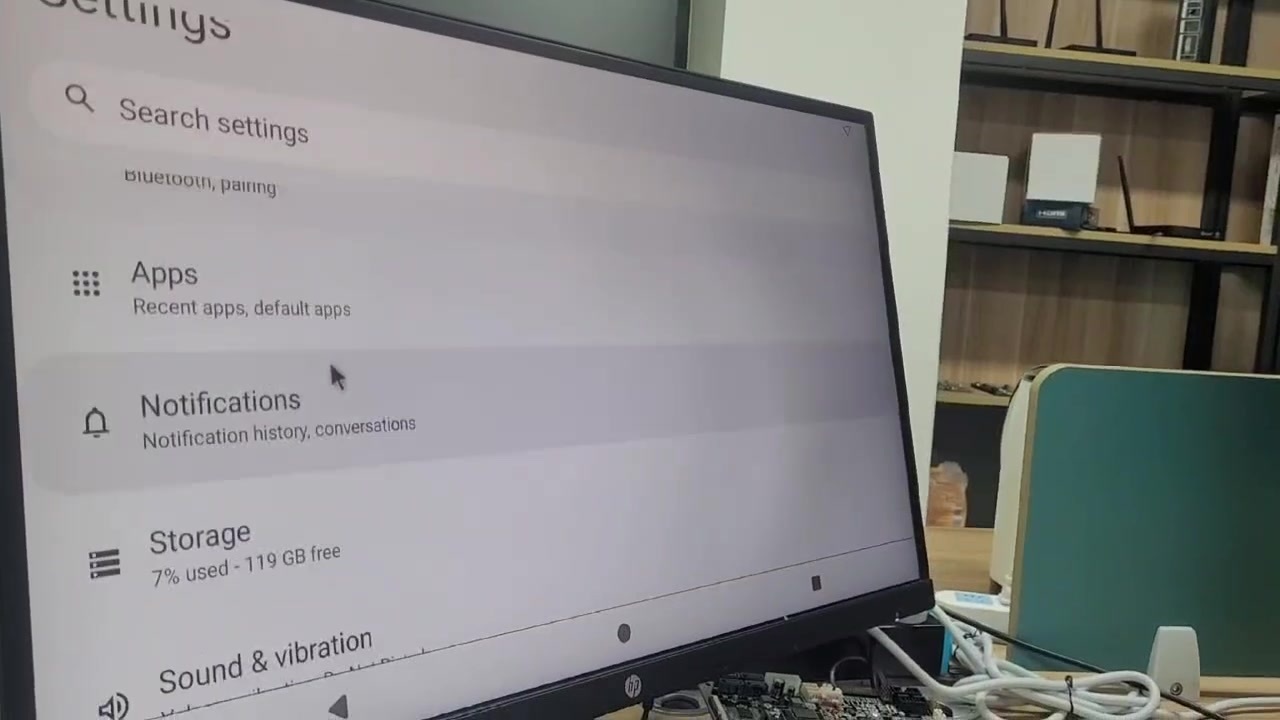
Screen rotation in all direction on smart display

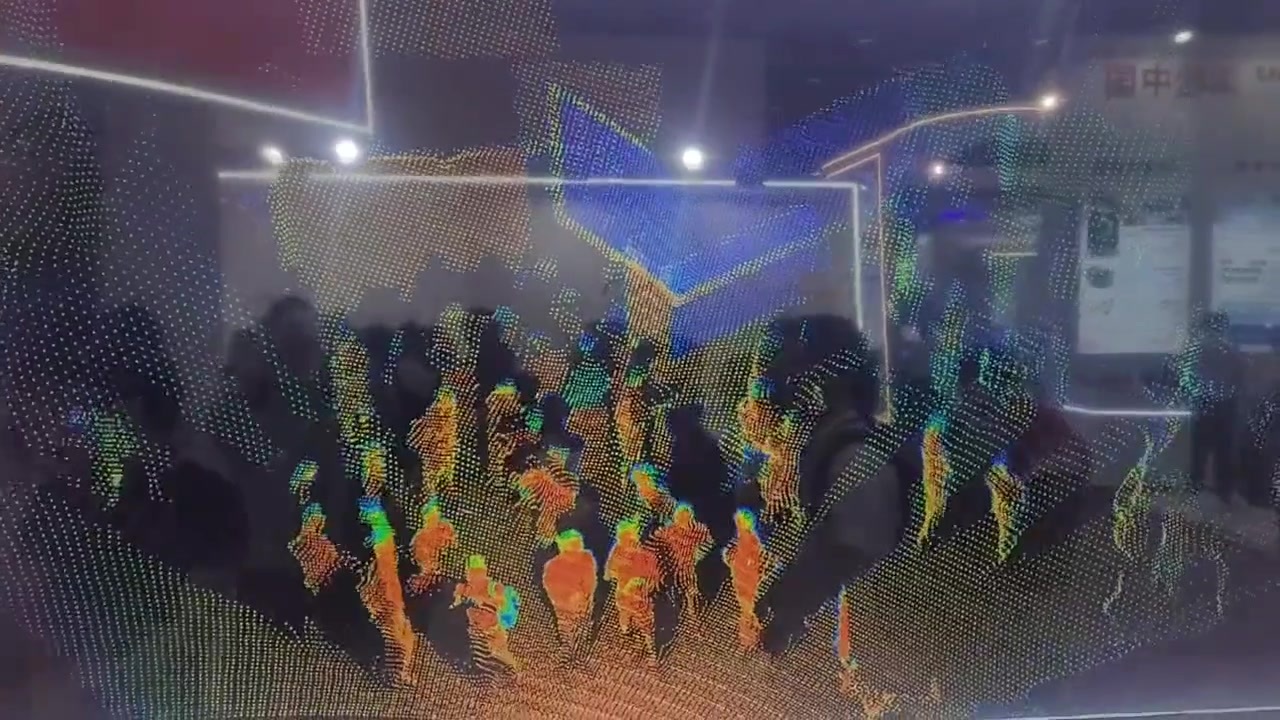
3D spad dTof lidar module for robots, vehicles, drones etc.
FAQ
what's edge computing box?
Regular website maintenance is the key to ensure the security, stable operation and user experience of the website. Maintenance work includes updating website content, checking and repairing website links, backing up data, conducting regular security checks, fixing vulnerabilities, optimizing performance, etc. These efforts help ensure that the website works effectively and provides a good user experience in the long run.
What is the difference between UI and UX in website design?
UI (user interface) and UX (user experience) are two important aspects of website design. UI focuses on the design, layout, and visual elements of a website, while UX focuses on the overall feel and interaction of the user on the website, including ease of use, navigation, interaction, and so on. Good UI design usually improves the user's UX experience.
What are the types of web hosting services?
Web hosting services can be divided into shared hosting, virtual Private servers (VPS), standalone servers, and cloud hosting. Shared host is multiple websites share a server resource, VPS is a virtual private server, independent server is a dedicated server, and cloud hosting based on cloud services to provide hosting solutions, each type has different characteristics and application scenarios.
What is the role of the website traffic statistics tool?
Traffic statistics tools such as Google Analytics help analyze website visit data, including visitor sources, visits, and user behavior. By understanding this data, website owners can understand the audience, adjust the content and design of the website, improve the user experience, and increase conversion rates.
Related Products



